Antarctic Survival Guide
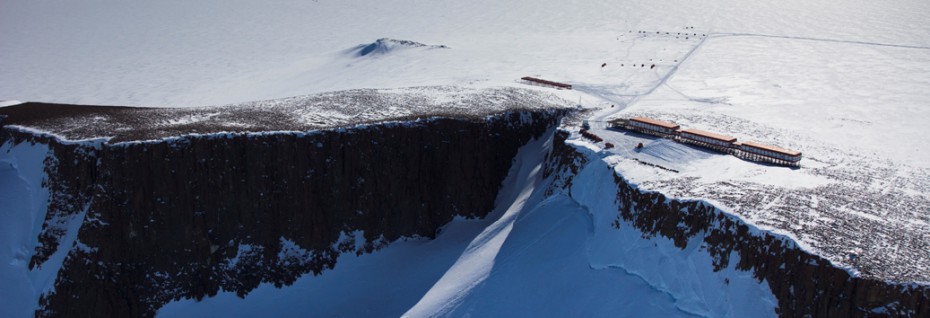
Foreword
My intention in writing this is to share the knowledge I have acquired since becoming part of the over-wintering team at SANAE IV. I hope that you can learn from my personal experience and that you will be able to apply it in a way that will allow you to be the best possible team.
For most this is your first trip to Antarctica. Hopefully, by now, you will have done some research and gathered information regarding what you can expect and how you can prepare yourself for the expedition down South.
The fact is – you are heading for the most awesome experience of your life. However, each individual and each over-wintering team is different. For each the experience will be unique. Whilst it is good to have certain expectations and it is highly advised to prepare yourself mentally, physically and professionally for the experience, there will be many challenges that lie ahead that you are unable to anticipate. The best advice is to go into this experience with your eyes open. Talk to people involved in the Programme and do not hesitate to ask questions.

It is not easy over-wintering in Antarctica. One expectation that you should put out of your mind is that it will be like taking an exotic holiday. This is a job in an extreme environment that nothing can prepare you for. Technology does not always operate or last as long as it would back in South Africa, your supplies are limited and you will be expected to make do with what is available. You will spend many hours outdoors, especially during the summer, and there is a physical side to much of the work that you will be undertaking. In addition, the climate and long periods of isolation will challenge you both mentally and physically. To put it bluntly – it is not for the faint hearted.
The positive aspect is that you will be in one of the most remote, visually stunning, unspoilt and adventurous places on the planet. If you cannot appreciate the privilege of the beauty and uniqueness of Antarctica and are the kind of person that prefers to be indoors rather than braving the elements and seizing opportunities, over-wintering is not for you.
I wish you the very best of luck.

The Job
Each person on the team will be hired into a specific job function. The base exists solely to support the science experiments that are being carried out in Antarctica. While some may argue that it is important for our country to maintain a presence in Antarctica to support the Antarctic Treaty and perhaps for some other political reasons, it remains fact that there would be no base if it was not for the science.
It is the job of the scientists on the base to run and maintain these science experiments and to liaise with the researchers and their partners back in South Africa and abroad. The base’s technical systems are supported by the Base Engineer and the technical team, which include the power distribution (generators and electrical), water (fresh and waste) and communications (internal and external) systems. In addition to this the technical team looks after all the vehicles as well. To round it all off, the medical officer looks after the team’s physical and mental well being.
So, as part of a small, select group the most important aspect is that you operate as a team. In a remote, challenging environment you need team players with good inter-personal skills. Whilst each individual on the team has his/her crucial role to play, nobody can perform their job without the support of the rest of the team. It is therefore important to recognise that each person on the team plays an equally important role. The success of your team and its scientific mission will depend on your ability to work together.

In addition to your designated role on the team, you will also be expected to play a role in the other, more menial day to day tasks – preparing and managing food and meals, making your own water (a physical challenge), cleaning your own toilets, organising your own entertainment etc. and keeping yourselves sane and happy for an extended period of time.
Remember the old saying, ‘the chain is only as strong as its weakest link’? Well that is not really true here, since if one team member is not pulling his/her weight then the rest of the team will be forced to make up for that team member. It is imperative to recognise that although you are hired to perform a specific job, you are part of a team that will reply on you and that you will be accountable to both in a work and a social setting.
Members of your team are not only your work colleagues but are quite literally your friends and family for the next 15 months, the only people you will have direct contact with. How you work together will affect your social relationships. Remember to be there and accountable to fellow team mates both in work and play! If you expect to work a 9-5 job and then disappear into your room for the rest of the day, you are going to have a very long and rough year. The unexpected often calls for “all hands on”, particularly during the winter months where anything that has to be repaired or maintained is limited to working within the constraints of the weather.
Prepare yourself to have plenty of social events and encourage everybody to get involved. Perhaps when packing you can give this aspect some thought.
The Team Leader
DEA will appoint somebody on the team to be the team leader. That individual will be responsible for what happens during the year and will direct the activities that will need to be carried out.
It is not an easy job being the team leader. The person who is appointed would not have necessarily asked or volunteered for the appointment.
Be as supportive as you can towards the team leader as he/she has a lot resting on their shoulders. Recognise that not every decision that is made will coincide with what you would want to happen. Be prepared to sometimes be disappointed.
The team leader should be doing what he/she believes is best for the entire team. If you have an issue with what the team leader is doing communicate it by arranging to speak to him/her privately before involving the rest of the team. Remember, that after many long months of relative isolation emotions and tempers are more likely to be sensitive.
A deputy team leader will be appointed and can also be involved in decision making or in mediating disputes with the team leader.
Sponsors, Gifts and Team Clothing
Before you depart from Cape Town, the team leader is usually responsible for organising sponsors and donations. This should be done as early as possible to ensure that you receive the items in time. This is not his/her official job and be prepared to assist should he/she decide to delegate certain tasks to other team members. The team leader may do this intentionally to assess your work ethic prior to departure and to get the team to start working together. It is also recommended that the team leader represent the group when dealing with potential sponsors as they would have been properly informed of the relative DEA policies to which you have to adhere.
The team leader should also get the ball rolling in designing a team logo and ordering team clothing (this has to be approved by DEA so get the guidelines from them before you start your designs). It is a good idea to involve the whole team and to get submissions from each team member. The team can then vote and decide on a logo and what team gear to purchase. This is an important aspect as the logo will need to be digitised and the team clothing ordered. Suppliers are usually very busy at the end of the year and start closing for the holiday season.
During the take-over function the teams are expected to exchange gifts of team clothing. This happens twice, once when you arrive and once when you leave, so make sure that you find out the sizes from the team leaders of the other teams. You may only be able to order the team gear for the second team once they have been appointed, in which case you can organise an order and ask them to bring it down with them.

You should also budget towards getting some extra team gear to give to the German team, who you will likely encounter during the take-over. The German team are usually VERY generous when giving team gifts and will also give you beer when you visit them so take some of your sponsored wine from SA with you to Summer Station to exchange.
Remember that when dealing with sponsors and year-teams from other countries, you are not only representing yourselves, you are representing all the teams that come after you. Don’t spoil it for other teams by burning bridges with loyal sponsors and the other teams you meet. Make sure that you understand any expectations that sponsors may have (within the DEA policy), and make sure that you communicate with them during the year and send them a few photos; this will keep most sponsors happy. Make sure you have enough team clothing and other items to exchange with the other teams.
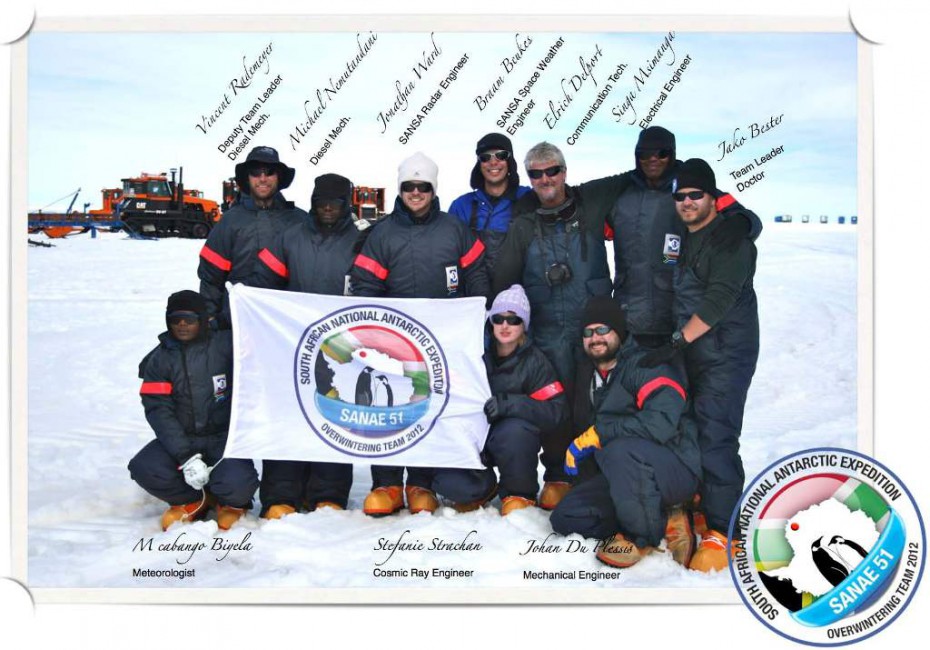
In terms of what team clothing to get, I would recommend a team golf-shirt (with a collar), this is acceptable attire in the dining hall of the SA Agulhas and can be used to identify year-team members on the ship. A team cap and/or beanie is also a great idea. Team badges that can be sewed onto clothing are popular and you will be able to trade them with other teams so get several per team member. It is a nice idea to have a team jacket or something that you can all wear for team photographs. It looks good when the whole team is wearing official gear in their photos. In addition to these things, you should get a rubber stamp of your team logo as well as a team flag.
Team clothing can turn out to be quite an expense, especially since you will be spending quite a bit of money, on gear and supplies for your year away. A good way to deal with this expense is to work out how much each team member needs to pay and then order extra gear to sell on the ship, so that you can make your money back. You will find that many people will want to buy your team memorabilia ,so work out a fair price and you will probably make your money back with enough to supplement your own gear as well.
Food and Booze
DEA will provide the food for the entire year. The team leader should request the list of food from DEA and from the current team leader so that you can see what you will have at the base. Note that DEA will also provide certain luxury items such as chips, chocolates, biscuits and sweets but this will be in a limited quantity and will probably not be on the food list as it changes every year.
If you have very exotic tastes then you will have to bring your own supplies. The base does not provide olive oil or balsamic vinegar, so if you like cooking with those items then you will have to bring them with you. Buy in bulk.
If you can get hold of the right sponsors you will be able to supplement the luxuries provided by DEA to the extent that you may not need to bring any extras yourselves. It is a good idea to look for sponsorships of wine. There should be a list of wine farms that have previously donated, available from the current team leader.
You will have to bring all your own booze. This is ordered from the ships chandlers and is duty free so it’s much cheaper. The team leader can get their contact information from DEA. Plan ahead and make sure you get your delivery early. You can get your cigarettes from them too. DO NOT try and quit while you are at SANAE.
There are various philosophies regarding how much booze you should bring, but the general rule of thumb is to multiply your normal consumption by two or three. You can also find out if the current team has any booze left over that they would be willing to sell to you, in which case you don’t have to worry about shipping it over.
With regards to vegetarians – you will eat A LOT of meat at SANAE, if you do not eat meat you are going to have a very limited diet. But it is doable and you will have to prepare a lot of your own meals; SANAE 50’s team leader was a vegetarian – and he survived. There are pork products on the base but there is a sufficient quantity of non-pork products for this not to be a problem.
With regards to non-drinkers – if you do not drink and have sensitivities towards other people drinking alcohol in your presence then you will have some issues. During take-over there is pretty much a party every other night. In our team, half the team did not drink, so the people who did drink found fewer occasions with the result that we have ultimately drank far less than what we budgeted for.
Personal Toiletries
- Toothpaste – 6 tubes, more if you are a compulsive brusher
- Toothbrushes – 2
- Shampoo – extrapolate your current usage and add 30% if you are going to grow your hair
- Conditioner – dry air
- Moisturiser – your skin gets very dry
- Comb – for your beard
- Soap – extrapolate current usage. Avoid liquid soap
- EyeGene – for dry eyes
- Foot powder – thick socks = smelly feet
- Towels – at least 2
- Shaving accessories
- Lip-ice – at least 4
- Sun Lotion – factor 50, at least 2 bottles
DEA will provide toilet paper and washing powder for the year but you will need your own washing powder on the ship. They might sell it on the ship.
The team can look for sponsors for these items as purchasing for the year is costly. Otherwise, if you have sufficient time, the team can go to Makro and buy everything in bulk and share the cost. DisChem is also good and they sell bulk quantities.
Take especially good care of your teeth since the base doctor will have limited training in dentistry.
Medications
You will need to bring a year’s worth of any medications that you are currently taking.
Sea-sickness tablets for the ship. Enough for four days there and four days back. Start taking it the evening before you get on the ship. Take it even if you think that you don’t get sea-sick, trust me. Cinnarizine (Stugeron) works well. It makes you a little drowsy but is better than the alternative. The ship is a great place to make friends and to socialise, so you do not want to be sick the whole trip. Pressure-point wrist bands have also been used with limited success.
You may wish to take some dietary supplements with you. Bring along vitamin D (you can take up to 1000iu per day), as you will not get any from the sun. Speak to your team doctor and find out whether you will be supplied any from DEA. If not, then a daily multivitamin, vitamin D and essential fatty acids are a good idea.
Hobbies and Room Items
Anything with fluid or moisture in it WILL DRY OUT unless it is sealed properly. I have even seen things in new packaging dry out. This applies to sweets and chocolates as well by the way. Don’t bring marshmallows.
Wooden musical instruments should be varnished properly or else they will dry out and warp. It might help to bring along some oil or something to treat the wood.
Bring down anything that you might want to play with (Puzzles, models, electronics, books, magazines). Something brightly coloured for your room, maybe a colourful duvet or a carpet is a good suggestion. Bring posters for the wall and bring photos of your family, girlfriend/boyfriend, and pets to personalise your living-space.
It is possible to bring your PC. Package it carefully and remove the hard drive. You could maybe organise for it to go into the sensitive’s container, which is flown to the base. It may also be wise to bring a UPS to protect it from power fluctuations.
There are many books in the SANAE library as well as many board-games. There are some DVD’s and movie disks left here from other teams but you can bring your own movies and TV series on a hard-drive and share them. You can also bring an Xbox or Playstation and some games. An MP3 player is also very useful. There is tonnes of music on the PC in the bar and on the PC on the ship.
Personal Fitness
As I mentioned before, there is a lot of physical work on the base. If you do not exercise already, then I suggest that you start! There is a gym on the ship and at the base. Bring gym cloths & shoes, gym towel and a water bottle (the MP3 player will come in handy here too). The weights get very cold during winter time so a pair of gym gloves is a must if you are going to be doing weights (you could use your glove inners for this too).
There are also two climbing walls and plenty of climbing gear (except climbing shoes).
Clothing and Outdoor Gear

You will be issued with a lot of clothing from DEA. Most of the issued stuff is perfectly fine for your needs. People just dress casually in their work cloths (the issued blue pants and blue collared top). If you want to bring extra casual clothes then that is fine. Bring some tracksuit tops, comfortable pants and t-shirts. Only good quality jeans seem to last and only as long as you don’t tumble dry them. Do not pack too many clothes. Most of the team this year packaged far too many clothes and have not worn them. Do bring plenty of underwear, at least a week’s worth, and some thin socks to wear inside the base.
A comfortable pair of slippers are highly recommended. Bring two pairs as one will get worn out. You will need something formal to wear on special occasions. There will be functions on the ship and at the base during summer and the team will have formal celebrations during the year. You may also wish to bring some fancy-dress attire for some themed events. You will need a bathing costume for an event on the ship. Some Slops will also come in handy.
The issued cold weather gear is pretty good. I would only recommend getting your own gloves. The issued gloves are fine for summer but are not suitable in winter. It is imperative that you purchase your own. If you do not bring your own gloves you will likely get frost-bite in the winter and be useless to the team doing any outdoor work.
Black Diamond gloves are the most popular amongst our team. First Accent gloves do not , in my opinion, hold up as well as the Black Diamond ones. I would suggest you get a good pair of inner gloves and then an outer pair of gloves (these could be soft or padded). A pair of mittens is absolutely essential. You should be able to fit your gloved hand into the mittens to warm your hand when you are not working.
Bring extra gloves, I had gone through two pairs of inners by mid-winter. It is also easy to lose a glove so have a backup. I bought a soft pair of outer gloves and a padded pair and used whichever was appropriate for the weather in combination with the inners. When it was really cold I added the mittens as well.
I stuffed a pair of the DEA issued soft gloves into my issued pig-skins to make them warmer and more comfortable. You will need the pig-skins when handling dirty things so to make them a little more user friendly, and since you will not be needing the DEA soft gloves, it is best to put them to this use.
I also highly recommend a Buff (neck warmer). You lose a lot of heat from your neck area so a Buff will protect you. There are also some nice versions which can pull up over your face instead of a balaclava.
Eyewear is very important. DEA will issue you a pair of goggles and some shades. The goggles are okay but the shades do not fit well and are ugly. Rather bring a comfortable, Polarized, UV filtered pair of sunglasses with you and use the DEA issued shades as a backup in case you lose your pair.
A small backpack is also recommended to store a few items when you are outside or on CAT trains.
You will probably not be able to obtain any additional sponsored clothing but you will likely be able to get a good discount from First Accent (50%) as well as the suppliers for Black Diamond (40%) and other outdoor named brands. First Accent have nice socks.
This is a good opportunity to use the discount for any climbing gear or other outdoor gear you might want to have when you are back home. Some team members also buy ice axes and crampons. There are plenty of ice-axes at the base and there are a few pairs of crampons so it is not really necessary to buy. Take note that you need special hiking boots to attach crampons and the ones at the base will definitely not fit onto your DEA issued boots. So you will need to at least bring your own boots if you want crampons. I used crampons twice the whole year. You decide. Platypus water packs are also popular but do not work during winter. Very nice for when you are on a hike.
Be sure to mark all of your belongings, especially issued gear as everybody gets the same stuff. Also make sure that you try on everything and get the right size. Make sure your boots are comfortable; you have to wear them the whole year!
Before you buy gear from First Accent or Black Diamond etc, go to Mountain Mail Order or a similar shop and try on the stuff to get your correct size for that brand.
Packing
You will be issued with three duffle bags in which to pack any gear you have. But it is suggested that you procure yourself several ‘trommels’, which are strong metal boxes, to pack your belongings. You should place any items that go into the trommels into water-tight packaging and also seal the lid of the trommel with tape. Snow can easily get inside your trommel, even while it’s still in the container and if it melts while out on the ice, it will soak everything inside.
You can purchase the trommels from a hardware store like Builder’s Warehouse. The whole team bought their trommels from them and they gave us a great discount, when we told them what it was for. You will also need to get locks for them.
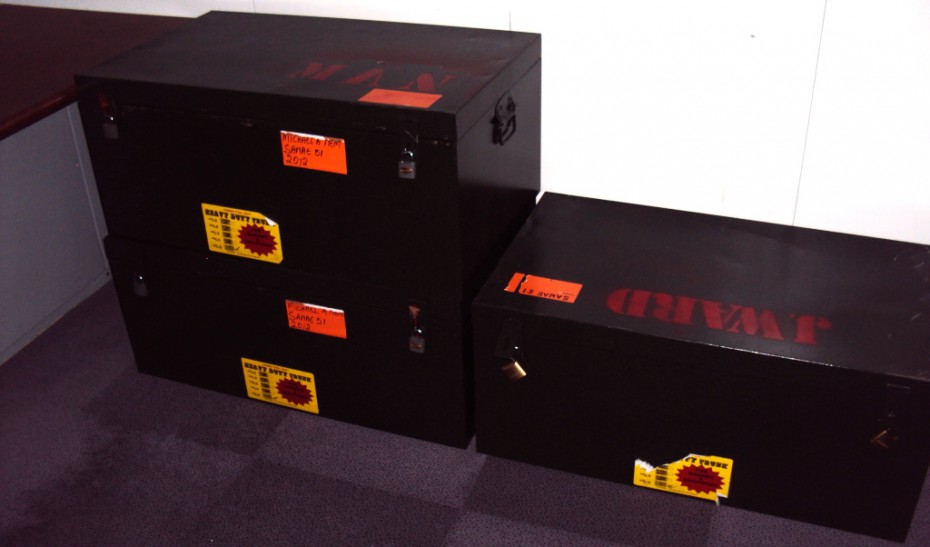
Try and get all your packing done as early as possible and put as much stuff as you can into your trommels. You will also need to take clothes and personal items onto the ship in your duffels. Expect to spend about three weeks on the ship but you will have access to laundry facilities. You will need to take your cold weather gear (just 1 set), pampoenskoene and your mummy bag with you on the ship. The rest of your cold weather gear you can actually pack into your trommels. Do not take it onto the ship as you will not have access to it anyway after you get onto the ice. In fact all you will be allowed to take onto the CAT train or helicopter is a small day pack. Everything else will be transported on the CAT train and could take up to a week to get to SANAE. Having less luggage on the ship also means that you will have more space in your room. Just make sure that you separate enough toiletries for the ship.
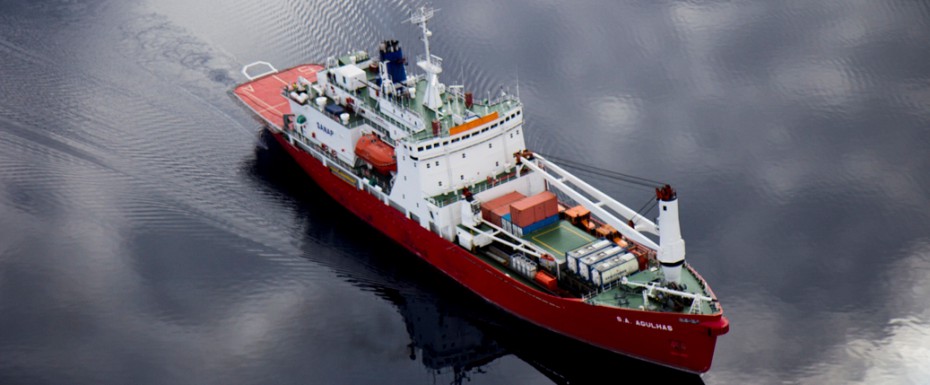
The Ship
You can spend up to three weeks on the trip, depending on the weather. You will need to budget for liquid refreshments and for any items that you wish to buy from the ship. You cannot take your own booze so you will have to buy any drinks and snacks you consume. I suggest taking about R1500 for each way since you will also be able to purchase ship memorabilia, such as clothing, caps and badges. When you get onto the ship you will have an account started for you and you will not be able to leave the ship until you pay your tab.
I also recommend bringing along one of those camping mugs with a lid. You can get them at Cape Union Mart but the ship may also sell them. This is useful for your coffee as it is very hard to drink coffee while the ship is rolling about. They are also good for the CAT train.
The ship is really where you set the tone for the whole trip. This is a great place to socialise and get to know the people with whom you will be spending the next few months. Build relationships, be friendly and the time will go quickly. Make use of the bar hours, attend special events, organise card games, movie nights, flip – learn sign language together – just don’t hide in your cabin otherwise nobody will even know who you are by the time you get to SANAE and everybody else would have already formed their own social clubs.
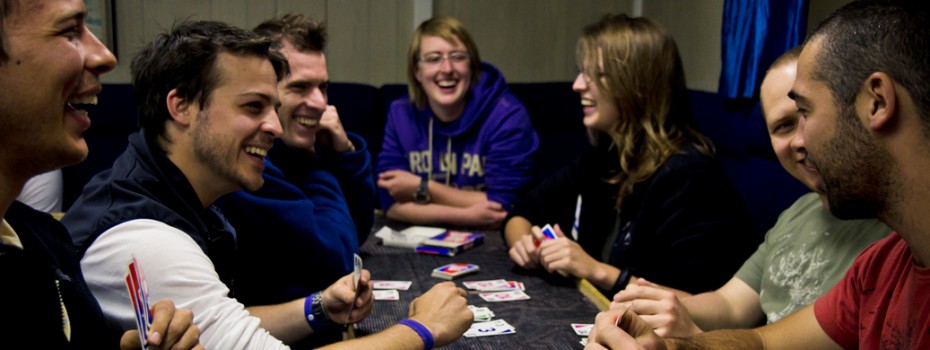
As I mentioned before, take your sea-sickness tablet’s. The first couple of days are the roughest and then most people are alright. Some people, who decided not to take anything, were down for nearly 10 days and missed a lot of the fun.
The food on the ship is AWESOME. Make sure you follow the dress etiquette, otherwise they will not serve you. During dinner, men need to be wearing a collared shirt (definitely not t-shirts) and closed shoes.
The ship has a great gym, it is a good idea to work out and burn off all the delicious food so that you can have more and not get too fat. Keep in shape because as soon as the ship hits the ice-shelf, you will be put to work.
Camera Equipment

I highly recommend that you invest in a decent camera (you will need a more advanced camera with manual settings to even start thinking about photographing aurora). The scenery is absolutely amazing and you will have brilliant photo opportunities, especially on the ship. A good zoom lens is useful for wild-life shots and pictures of mountains, ice-bergs and the moon. A wide-angle lens is a must. Some scenery shots just cannot be appreciated with a normal lens. Also get a UV and a polarising filter for the high brightness of the environment.
Definitely bring a tripod or at the very least a mini-tripod.
The GoPro HD is also a very popular item. This video camera is almost indestructible and is perfectly suited for shooting video in this environment and you can attach it to almost anything; challengers, helicopters, the ship, dozers, skidoos and yourself!
Extra batteries are also essential. Batteries do not last long in the cold so you will need spares in order to have a decent photo session. The GoPro has a battery pack add-on option to prolong its operation.
Things I Wish I Had Brought Down
- Batteries – If you bring hobbies down that require batteries, make sure you bring enough with you. Remember batteries don’t do so well here. A rechargeable battery pack is also a good idea.
- A fold up camping chair – you will have plenty of opportunities to relax outdoors, especially on CAT trains. It would have been very nice to have had a camping chair for those occasions.
- My PC
Things I Wish I Had Left Behind
- Brought far too much casual clothing
- Brought far too many toiletries
- Text books – I brought a whole bunch of reference text books that I did not even open. The Internet is enough most of the time. I could have used the space for something else.
- Handwarmers – I have used handwarmers on only two occasions. If your hands are constantly cold then you did not bring sufficiently warm gloves. Do not spend unnecessary money on handwarmers – rather invest in a decent pair of mittens. 10 handwarmers per person is easily enough. Don’t even bother with foot warmers.
Things I Am Glad I Brought
- Good gloves and mittens
- Buff
- Movies & TV series
- Slippers
- Head-lamp with rechargeable battery pack
- Thermos flask
- Olive oil

Pictures by Lodewich van den Berg
This guide is also available to download as a PDF: